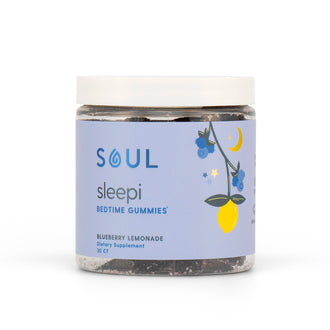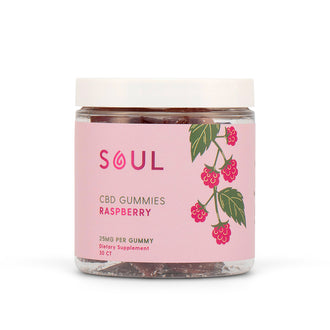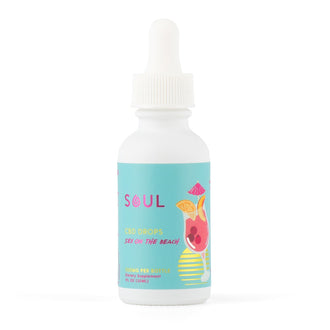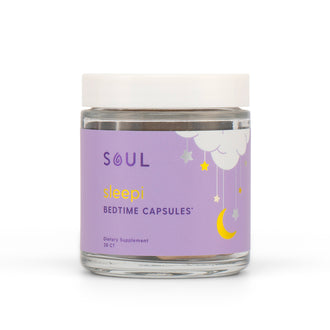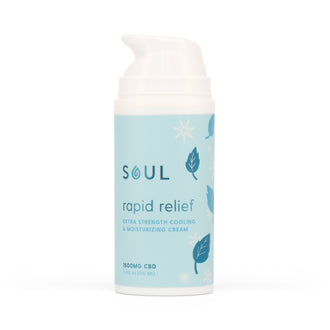Key Takeaways:
- CBDV vs. THC: Unlike THC, CBDV is non-psychoactive, offering health benefits without the high, making it suitable for users seeking therapeutic advantages without cognitive impairment.
- Health Benefits: CBDV shows promise in neuroprotective properties, potential in treating autism spectrum disorder, anti-inflammatory effects, and pain relief, contributing to its growing interest in medicinal research.
- Safety and Legality: Before using CBDV, it's crucial to understand its safety profile, potential drug interactions, and legal status in your area. Consult with healthcare professionals and purchase from reputable sources for quality assurance.
Cannabidivarin (CBDV) is a non-psychoactive cannabinoid gaining recognition for its potential health benefits. Similar to CBD, it is derived from cannabis plants but is distinguished by its unique properties and advantages for enhancing wellness. This guide explores CBDV's benefits and how it can be integrated into daily health routines, offering a straightforward overview for those interested in natural supplements.
Elevate Your Wellbeing With SOUL
Embody the essence of well-being with SOUL. Whether you seek calm, clarity, or recovery, we are here to support you every step of the way. Embrace wellness. Choose SOUL today. |
Understanding CBDV
The Basics Of CBDV
Short for Cannabidivarin, CBDV is a member of the cannabinoids family, originating from the Cannabis sativa plant. It stands out from THC (tetrahydrocannabinol), known for its psychoactive properties, as it does not produce a high. This makes it an appealing option for individuals looking for health benefits without the mind-altering effects.
CBDV's Relationship With The Endocannabinoid System
The endocannabinoid system (ECS) plays a crucial role in maintaining bodily harmony and health. It impacts various functions, such as sleep, mood, appetite, and memory. CBDV interacts with the ECS in ways that are currently being studied, with the potential to offer unique health benefits due to its distinct chemical structure, which varies slightly from that of CBD.
CBDV In Cannabis Strains
Certain cannabis strains, particularly landrace strains from Africa and Asia, are predominantly rich in CBDV. These strains often feature lower levels of THC and higher concentrations of CBDV, drawing significant interest from researchers studying the medicinal properties of cannabinoids.
The Health Benefits Of CBDV
Cannabidivarin (CBDV) is gaining recognition for its potential health benefits. Although still under preliminary research, early studies and anecdotal reports indicate a variety of therapeutic possibilities.
Neuroprotective Properties
Neuroprotective properties have brought attention to CBDV, suggesting its potential in managing neurological disorders. It interacts with the body's endocannabinoid system to modulate brain activity and prevent overexcitation, reducing the risk of seizures and other neurological issues.
Potential In Treating Autism Spectrum Disorder
Emerging research suggests that CBDV could play a role in managing symptoms associated with autism spectrum disorder (ASD). The cannabinoid may help alleviate problems with social interaction, communication, and repetitive behaviors, offering hope to individuals and families seeking alternative treatments.
Anti-inflammatory Effects
Like many cannabinoids, CBDV has shown anti-inflammatory properties, which could be beneficial in treating conditions like arthritis, inflammatory bowel disease, and other inflammatory conditions. By reducing inflammation, CBDV could help relieve pain and improve overall quality of life for those affected by chronic inflammatory diseases.
Pain Relief
CBDV may change pain perception and lower inflammation through its interaction with the endocannabinoid system, providing a natural pain management alternative to traditional painkillers with fewer side effects. SOUL Thrive Capsules, designed for pain relief, offer a natural way to ease discomfort and promote recovery with a unique ingredient blend.

How CBDV Compares To Other Cannabinoids
Cannabidivarin (CBDV) belongs to the diverse cannabinoids family, each with unique properties. Knowing how CBDV differs from other well-known cannabinoids aids consumers in making informed wellness choices.
CBDV Vs. THC
THC, known for its psychoactive "high," contrasts with non-psychoactive CBDV, which offers health benefits without mental alteration. Unlike THC's pain relief, appetite stimulation, and mood changes, CBDV provides therapeutic advantages without cognitive impairment.
CBDV Vs. CBD
CBDV and CBD are chemically similar but differ in effects. Both non-psychoactive, CBD is well-known for aiding anxiety, depression, and pain, while CBDV, less studied, shows potential in neurology and inflammation, offering unique benefits.
CBDV And Other Minor Cannabinoids
Apart from CBD and THC, there are dozens of other cannabinoids, such as CBG (cannabigerol), CBN (cannabinol), and THCV (tetrahydrocannabivarin). Each of these compounds has unique properties and potential health benefits. CBDV is gaining interest for its potential in areas less explored by other cannabinoids, particularly in neurological and gastrointestinal health.
How To Incorporate CBDV Into Your Wellness Routine
Incorporating Cannabidivarin (CBDV) into your daily routine can enhance health naturally. Here are practical methods to add CBDV to your wellness regimen:
Choose The Right Product
Start by selecting the right CBDV product that fits your lifestyle and health goals. Options include tinctures, capsules, edibles, and topicals. For those new to CBDV, starting with a low dose and gradually increasing it based on your comfort level and desired effects is advisable.
Incorporate Into Your Diet
CBDV can be incorporated into your diet through tinctures in drinks or meals, or by taking edibles and capsules as supplements. Consistent and appropriate dosing is crucial for full benefits.
Combine With A Healthy Lifestyle
While CBDV can contribute significantly to your well-being, combining it with a balanced diet, regular exercise, and sufficient sleep will maximize its effects. A holistic approach to wellness, including mental health practices like meditation and stress management, can enhance the benefits of CBDV.
Consult With A Healthcare Professional
Before adding CBDV or any supplement to your routine, consulting with a healthcare professional, especially if you have existing health conditions or are taking other medications, is crucial. This ensures safety and appropriateness for your specific health needs.

Safety And Legal Considerations For CBDV
While Cannabidivarin (CBDV) offers promising health benefits, it's essential to understand the safety and legal aspects before incorporating it into your wellness routine.
Safety Profile Of CBDV
CBDV is generally well-tolerated and considered safe for most people. However, as with any supplement, there can be side effects, especially when taken in large doses. These can include fatigue, changes in appetite, and gastrointestinal discomfort. It's crucial to start with a low dose and observe how your body reacts before increasing the amount.
Drug Interactions
If you're currently taking medication, it's vital to consult with a healthcare provider before adding CBDV to your regimen. CBDV can interact with certain medications, altering their effectiveness or leading to adverse effects. A healthcare professional can provide guidance based on your individual health circumstances.
Legal Status
The legal status of CBDV is complex and varies by location. In many regions, CBDV falls under the same legal category as CBD, which is allowed if it's derived from hemp with low THC levels. However, laws are continually evolving, and it's essential to stay informed about the legal status of CBDV and related products in your area to ensure compliance.
Quality And Purity
Due to the lack of regulation in the cannabis industry, the quality and purity of CBDV products can vary significantly. It's important to purchase products from reputable sources that provide third-party testing results. This ensures that the product contains the advertised levels of CBDV without harmful contaminants.
Final Thoughts
The exploration of CBDV reflects a growing interest in natural health solutions, highlighting its potential in neuroprotection, anti-inflammation, and pain management. This shift towards plant-based treatments like CBDV emphasizes the importance of informed choices and professional consultation in personal wellness journeys. As we embrace these natural compounds, we move towards a more health-conscious and informed society.
Read Also:
- RSO: The Ultimate Cannabis Extract
- Maximizing The Benefits Of THC Tincture
- The Healing Powers Of Rhodiola Extract
Frequently Asked Questions
What is the main difference between CBDV and THC?
CBDV is non-psychoactive and does not produce a high, making it appealing for health benefits without mind-altering effects. In contrast, THC is known for its psychoactive properties, causing mood changes and a high.
How can CBDV affect the endocannabinoid system?
CBDV interacts with the endocannabinoid system, potentially offering unique health benefits due to its chemical structure. This interaction may help maintain bodily harmony and impact functions like sleep, mood, and appetite.
Can CBDV be found in all cannabis strains?
No, CBDV is predominantly found in certain landrace strains from Africa and Asia, known for lower THC levels and higher CBDV concentrations.
Is CBDV legal to use in all countries?
The legal status of CBDV varies by location and often falls under the same regulations as CBD. It's essential to check the local laws in your area regarding CBDV and hemp-derived products.
What are the potential side effects of using CBDV?
While generally well-tolerated, CBDV can cause side effects such as fatigue, changes in appetite, and gastrointestinal discomfort, especially when taken in large doses.
How does CBDV compare to CBD in terms of benefits?
Both CBDV and CBD are non-psychoactive and offer health benefits. However, CBDV shows particular potential in neurology and inflammation, while CBD is more widely recognized for aiding anxiety, depression, and pain.
What are some ways to incorporate CBDV into my wellness routine?
CBDV can be integrated into your routine through tinctures, capsules, edibles, and topicals. It's advisable to start with a low dose and gradually increase it based on your comfort and desired effects.
Should I consult a healthcare professional before using CBDV?
Yes, consulting with a healthcare professional is crucial before adding CBDV or any new supplement to your routine, especially if you have existing health conditions or are taking medications.
How can I ensure the quality and purity of CBDV products?
Look for products from reputable sources that provide third-party testing results, ensuring that the product contains the advertised levels of CBDV without harmful contaminants.
Can CBDV interact with other medications?
Yes, CBDV can interact with certain medications, altering their effectiveness or leading to adverse effects. Always discuss with a healthcare provider before combining CBDV with other medications.
Sources:
- McPartland, J. M., & Small, E. (2020). A classification of endangered high-THC cannabis (Cannabis sativa subsp. indica) domesticates and their wild relatives. PhytoKeys, 144, 81–112. https://doi.org/10.3897/phytokeys.144.46700
- Ma, L., Platnick, S., & Platnick, H. (2022). Cannabidiol in Treatment of Autism Spectrum Disorder: A Case Study. Cureus, 14(8). https://doi.org/10.7759/cureus.28442
- Ibeas Bih, C., Chen, T., Nunn, A. V. W., Bazelot, M., Dallas, M., & Whalley, B. J. (2015). Molecular Targets of Cannabidiol in Neurological Disorders. Neurotherapeutics, 12(4), 699–730. https://doi.org/10.1007/s13311-015-0377-3
- Khalsa, J. H., Bunt, G., Blum, K., Maggirwar, S. B., Galanter, M., & Potenza, M. N. (2022). Review: Cannabinoids as Medicinals. Current Addiction Reports, 1–17. https://doi.org/10.1007/s40429-022-00438-3
- Vučković, S., Srebro, D., Vujović, K. S., Vučetić, Č., & Prostran, M. (2018). Cannabinoids and Pain: New Insights From Old Molecules. Frontiers in Pharmacology, 9(9). https://doi.org/10.3389/fphar.2018.01259
- Smith, C. J., Vergara, D., Keegan, B., & Jikomes, N. (2022). The phytochemical diversity of commercial Cannabis in the United States. PLOS ONE, 17(5), e0267498. https://doi.org/10.1371/journal.pone.0267498
